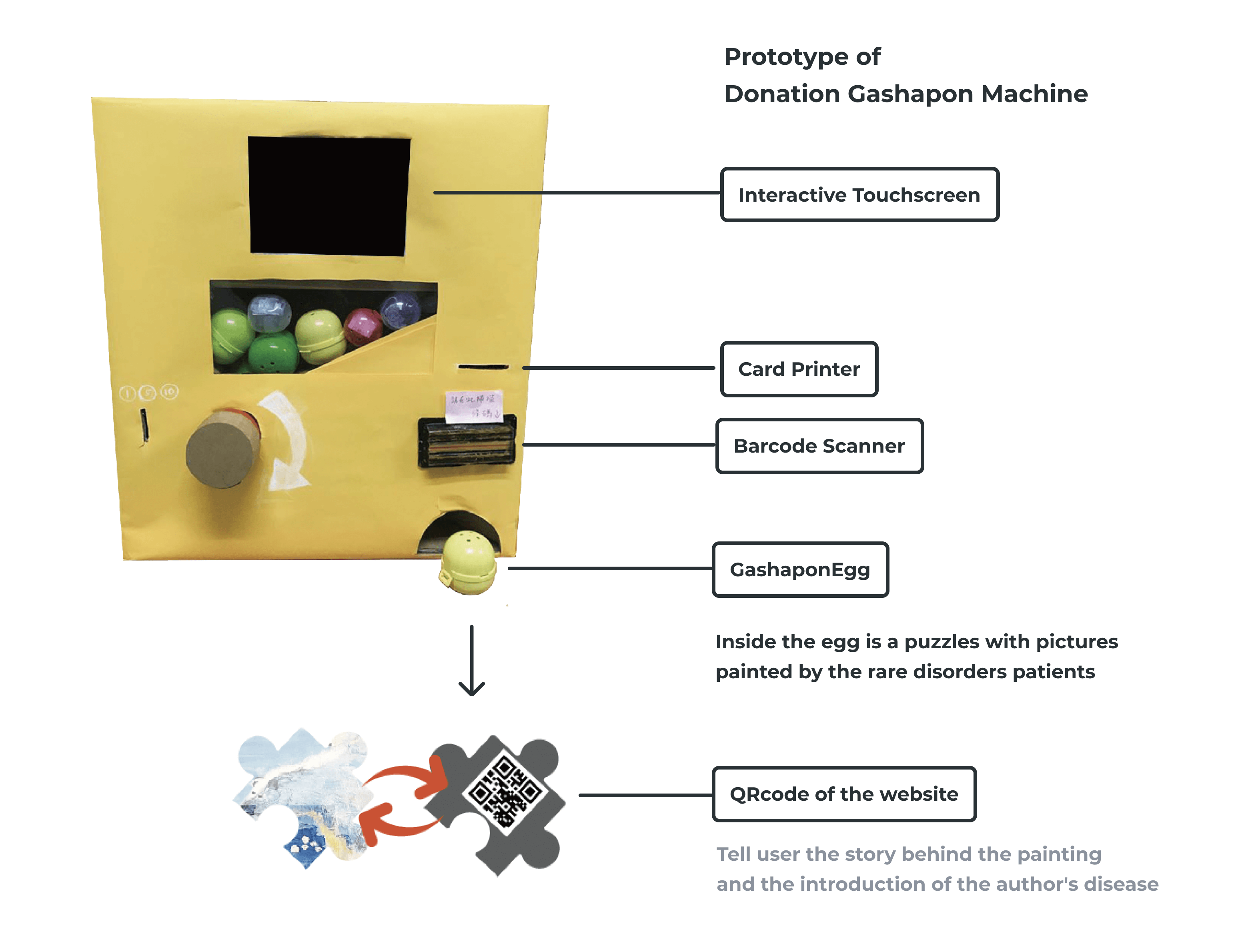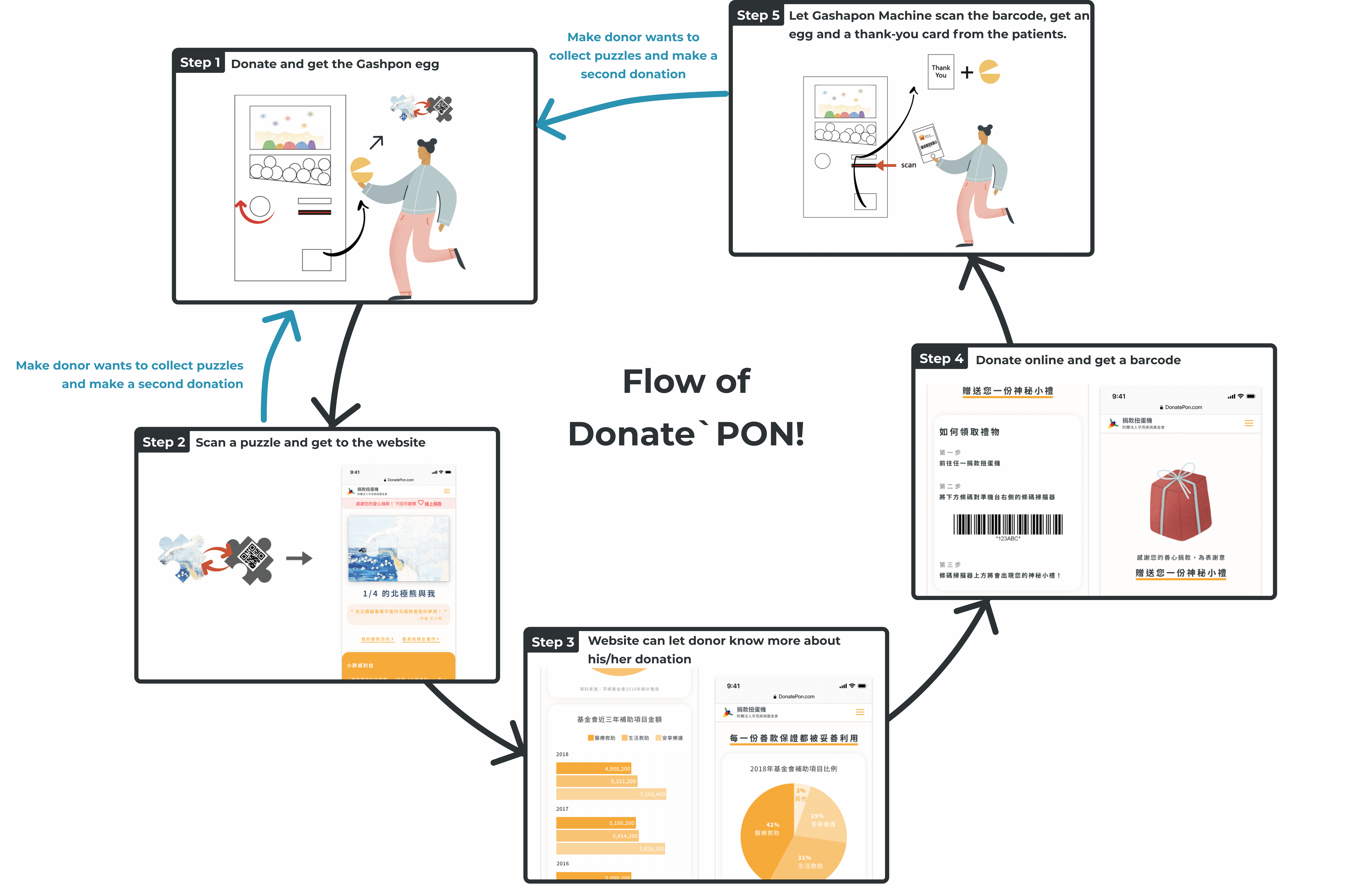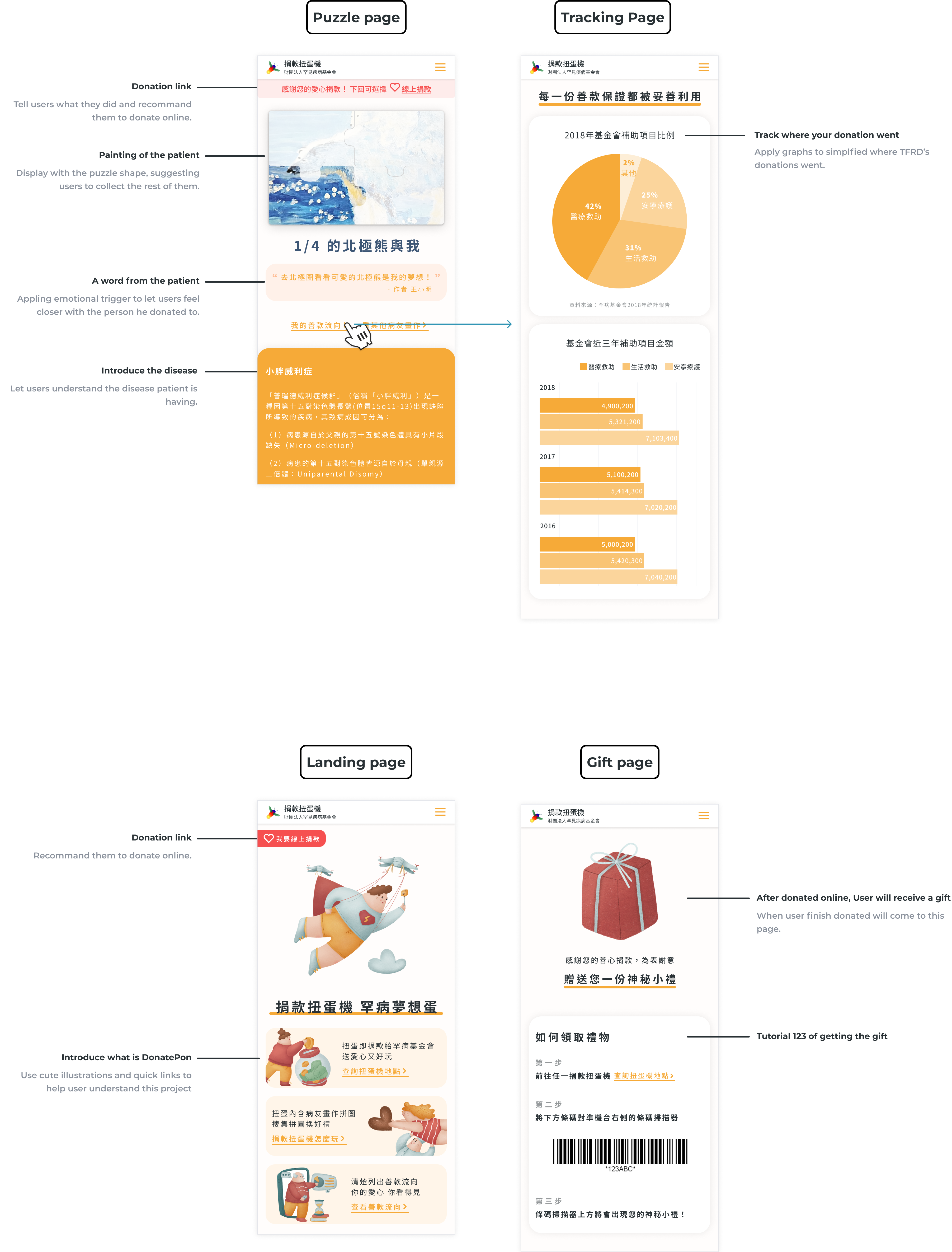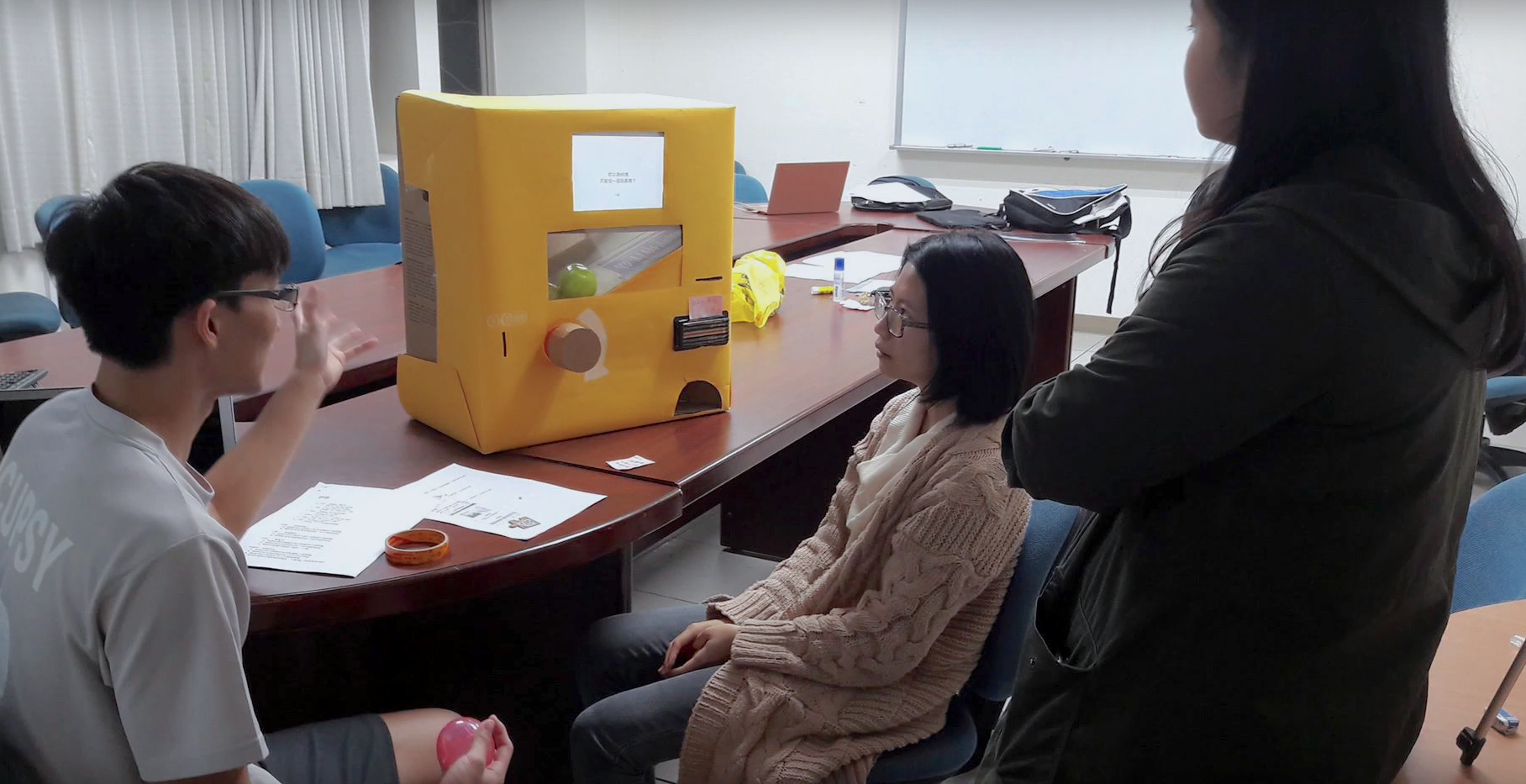Before diving in, I wanted to give a big shoutout to the team:
Shi-Chih Chen, Ya-Kuei Chang, Yu-Shiuan Yang, Chen-Ya Chen
You guys made my first design experience a fun and meaningful journey!
Donate`PON, donate + Gashapon(扭蛋機), is a medium for creating more opportunities for donation. It has an easy-to-follow and playful donation process, hopefully making the donation more attractive to the general population.
There are over 15,000 rare disorders patients in Taiwan. For rare disorder patients, long-term medical and daily care expenditures are an extremely heavy burden. Most of them have to rely on financial aid from the Taiwan Foundation for Rare Disorders. Therefore, stabilizing the donation sources of rare disorders-related charities is a critical task to support these patients’ medical and daily expenditure. Therefore, our team decided to dig into this topic and see was there any chances can we help via the power of design.
01
Understand Donors’ Problems, Ideate Solution, and Failed ⛔️
Interviewed donors (users) and analyzed data with affinity diagram to generate personas. Then brainstormed and sketched for possible solution but didn’t work.
⇢ 02
Look from Charity Aspect and Define the Real Problem and Goals
Interviewed the other side of donation process: charity group, so we set the real problem and goals.
⇢ 03
Ideate Solution
Used wireframe, UI prototype and box& tape(?) to build a gachapon machine’s prototype.
⇢ 04
Validate Design
Invited 6 people to interact with gachapon machine’s prototype and website.
To have a better understanding of people’s donation behavior, we interviewed 16 people, including eight people who earned lower than 22 thousand a month, and eight who earned higher. Our interviewees had diverse backgrounds, including occupation, education level, and experience of donation within 3 months, etc.
We asked them to share the details of their experiences and motivations of donating (or not), also ask about the issue of trust in the process of their donations. Below are the key findings:
🥰 These will increase people’s willingness to donate:
- The foundation is related to donors' own experiences
- Donors have extra money or coins
- Positive feedback from the foundation will increase their willingness for the next donation
😰 These will lower people’s willingness to donate:
- The foundation already owned enough resource
- Charity frauds and misuses of public donation
- Feeling of being forced to donate
"I always want to donate some coins every time I see a donation box. "

Then we turn interview details into three personas:
Po-Han is a 26-years-old graduate student. He is a casual guy and won't manage his money. Although only earns 6000 subsidies per month, he thinks he can still help others by donating charges.
Xiao Jhen is a 27-years-old, hard-working sales assistant. Due to her parents divorced when she was little, she pays attention to a single-parent family issue. She think as a grown-up with sufficient income, she should help people who share the same experiences.
Zi-Jie is a 25-years-old independent media writer. She has a master's degree in anthropology, so she is interested in the donation distribution issue. She donates on a regular basis and will track after donation.
Based on these personas' needs and frustrations, we started to ideate as a group by creating a number of sketches. We’ve tried to come out with great ideas, however, there are always weird feelings in our mind, telling us we were in the wrong direction.
Then we realized the original design is not appropriate for the donation of rare disorders, because:
(1) Not intuitive enough when using
(2) Gamification cannot match the goal of donation.

We interviewed the CEO of the most representative donation organization of rare disorders in Taiwan, the Taiwan Foundation for Rare Disorders (TFRD). We found out that:
After knowing both sides of donation (donor and charity), we decide to focus on persona "Po-Han, Wang". "Po-Han, Wang" didn't have a regular organization to donate, and he donate charges often. We assume this type of person is in majority among all people. So, we started to think:
How might we...
present a donation in a low threshold, an intuitive way, but still obtain information of rare disorder group?
We consider diverse interaction possibilities, such as inviting people to complete a public art, a digital projection to catch people’s eyes, an electronic wallet including donation shortcuts, and so on. Finally, we chose to leverage Gashapon in our design.

In Taiwan, Gashapon is a well-known device that combines a toy vending machine with a toy collecting game and can be seen in many public areas. We think the process of playing a Gashapon is intuitive for Taiwanese users, and it is a good physical touchpoint to catch their attention. Also, we think this solution can achieve TFRD’s long-term goal—exploring donator groups and ensuring stable and continuous donation.
Here are how user interact with (UX/UI has been redesigned by me in 2022):


We want to test whether our design’s usability and deliver the information clearly. In this testing process, We expect where can we improve, whether the design of the interface or the whole process.
We recruited 6 participants to evaluate our design prototype. Four out of six are under 30 years old and the others are between thirty to fifty years old. All of the participants have the experience of donating and using the Gashapon machine.
We collect data in the test process by:

After the testing process, we found out though the user-flow is correct, there are some details missing, so that user got confused: